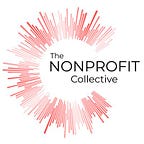Surveying the Field: The Final Interview
Written by Victoria Shadle
After nearly four months of talking to strangers in the nonprofit sector for Surveying the Field, this series is wrapping up with our 20th interview— and also our first guest who will remain anonymous. This guest is a female fundraiser from the South who began working full-time in the sector at a social services nonprofit last year after over a decade of being very involved in nonprofits in her community as a volunteer and board member.
As with all of the Surveying the Field guests, I asked these four questions:
1. What do you think are the biggest misconceptions about the nonprofit sector?
2. If you could tell nonprofit volunteers, donors, or board members one thing — what would it be?
3. What do you believe people think about working in the nonprofit sector, and how has that aligned with or challenged what you’ve experienced?
4. What cultural or structural norms have you seen at individual nonprofits or the sector as a whole that you would like to see change?
Keep reading to learn more about her take on these questions and the nonprofit sector at-large.
While she is relatively new to working in the nonprofit field, this guest has a wealth of experience from her long history of local volunteer work. She began volunteering with nonprofits when she was a student and those early experiences in high school and college propelled her to join a nonprofit board as a young professional.
Her volunteering spanned across many local and regional organizations and over the years she has served on more than five boards and in multiple board and event leadership positions. In 2019, after decades in the private sector, she was looking to make a career change and was hired as a full-time fundraiser at a organization she was already volunteering with.
“I love my job because it not only fulfills my passion for helping others, but it also really pushes me outside my box and challenges me to be creative. As a staff member I’ve learned the ins and outs of my organization — volunteers have a real passion for the mission, but staff are the ones who hear and see everything and can tell you anything about the work.”
Now that she’s been on both sides as a dedicated volunteer and staff member, she sees the value in organizations having paid, professional fundraisers even if they have an active volunteer base. She sees staff as essential to drive the strategy of fundraising and to keep the momentum going with an event or campaign — when there is not this staff support, she sees volunteers being over-tasked with responsibilities and getting burnt out.
In thinking about the nonprofit sector at-large, her views are undeniably shaped by her local community where they have an abundance of nonprofits. Keeping this in mind, she believes nonprofits should be doing more to compliment one another’s work rather than compete with each other. She wants to see more organizations partnering with one another both programmatically and with fundraising.
“I really wish we could compliment and not compete — it’s fine to have several nonprofits for a cause, but find ways to partner and work together.”
In this guest’s capacity as a fundraiser, she’s thinking about how her organization could host a joint fundraising event with others in the community. She sees this as a win-win situation as it would allow donors to support multiple great causes during one night and she believes through a combined fundraiser they could not only bring in more funds, but also have higher attendance than if each organization held a separate event.
“Imagine the reach nonprofits would have if they combined databases to promote a single event every couple of years… In a town with so many nonprofits there is always something to support which is great, but donors can also get spread too thin. They want to keep supporting but at some point you can’t do 10–15 events a year, there’s not enough time or financial resources”
She realizes there would be challenges and red tape from budgeting to privacy and so forth, but believes there is untapped potential with this type of fundraising vehicle. And on a larger scale, she dreams of having all of the nonprofits in her community form an alliance that meets a few times a year to discuss their major fundraisers which would allow organizations to avoid planning events on the same day and with the same theme.
Lastly, in thinking about the sector as a whole this guest stressed how people need to realize that every nonprofit had to start somewhere. Her own organization has grown significantly from a single program to a large umbrella agency serving constituents in multiple counties. While some can question the need to grow so large, she argues that the expansion was necessary to address the real and growing need in the community — within the past year alone they’ve seen a 70% increase in need for their services.
“Many people don’t realize that while a nonprofit might start out smaller and more focused, it has too balloon over the years to address the need.”
While there is a lot of need, this guest also sees a lot of compassion in her work and great value in communities members getting involved and giving back.
